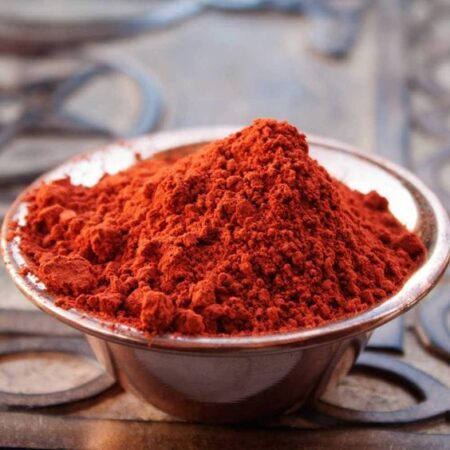The heartwood of the red sandalwood tree displays a distinct red hue, ranging from deep crimson to a lighter reddish-brown tone. It boasts ornamental and aromatic properties, making it highly sought after for crafting intricate designs, sculptures, and decorative items.
Significantly, certain cultures attribute religious and cultural importance to red sandalwood, employing it in religious ceremonies, rituals, and as incense in temples. However, its high demand has led to overexploitation, resulting in its classification as a vulnerable and protected species. As a result, authorities have implemented measures to regulate the harvesting and trade of red sandalwood, aiming to prevent illegal logging and ensure its conservation.
The limited availability and protected status of red sandalwood make it command a high price in the market, as artisans often reserve it for premium wood products, luxury furniture, and high-quality handicrafts. To meet the demand, some instances involve the use of other species resembling red sandalwood, like “Sandalwood” (Santalum album), though it is distinct from genuine red sandalwood.
Back to Ancient Time
The history of Red Sandalwood dates back centuries and is deeply rooted in the culture and traditions of southern India. This prized hardwood tree, scientifically known as Pterocarpus santalinus or “Rakta Chandan,” has been revered for its rich, reddish-brown heartwood and distinctive fragrance. For ages, traditional medicine, especially in Ayurveda and traditional Chinese medicine, has attached significant importance to red sandalwood, utilizing it to treat various ailments like skin disorders, fever, and digestive issues. Moreover, its cultural and religious significance has led to its use in religious ceremonies, rituals, and as temple incense. However, over the years, due to high demand and overexploitation, red sandalwood has become a protected and vulnerable species. Today, measures are in place to regulate its harvesting and trade, ensuring its conservation for future generations to appreciate its beauty and unique properties.
BENEFITS OF RED SANDALWOOD
- Medicinal Properties: It is believed to possess properties like anti-inflammatory, antipyretic, and analgesic effects. People use the wood to treat skin disorders, fevers, digestive issues, and other health conditions.
- Aromatic and Ornamental Use: It is highly desirable due to its distinct fragrance and rich reddish brown colour. It is often carved into intricate designs, sculptures, and decorative items, adding a touch of elegance to various art and craft creations.
- Religious and Cultural Significance: In several cultures, red sandalwood holds religious importance. People use it in religious ceremonies, rituals, and temples as incense. People consider it sacred and associate it with various cultural practices and traditions.
- High-Quality Wood Products: Red sandalwood for crafting premium wood products. Its use in high-quality handicrafts further adds to its market value.
- Natural Beauty and Aesthetics: The deep crimson to reddish-brown color of red sandalwood gives it a distinct and beautiful appearance. This natural beauty makes it a preferred choice for creating visually appealing objects.
- Long-Lasting Fragrance: The pleasant fragrance of red sandalwood is long-lasting. Its a popular choice for making incense and aromatic products.
- Potential Therapeutic Uses: Research is ongoing to explore the potential therapeutic benefits of red sandalwood, particularly in the field of skincare and cosmetics. Many believe that it possesses properties that can benefit the skin and enhance overall well-being.
- Conservation Efforts: Due to its vulnerable and protected status, red sandalwood’s usage promotes conservation efforts. Responsible sourcing and utilization help in preserving this valuable tree species and its natural habitats.
RED SANDALWOOD AS A SKINCARE PRODUCT
Red sandalwood holds a prominent place in the realm of skincare due to its numerous beneficial properties. For centuries, traditional medicine has utilized it to address various skin concerns. Some key uses of red sandalwood in skincare are:
- Skin Brightening: Red sandalwood’s natural skin brightening properties are well-known. It helps to reduce the appearance of dark spots, blemishes, and uneven skin tone, promoting a radiant complexion.
- Anti-Inflammatory Action: The wood possesses anti-inflammatory attributes, making it effective in soothing skin irritation, redness, and inflammation. Its calming properties benefit sensitive and acne-prone skin.
- Anti-Acne Treatment: Red sandalwood’s antibacterial properties aid in combating acne-causing bacteria. It helps to cleanse and purify the skin, reducing the occurrence of breakouts.
- Exfoliation and Detoxification: Often use ground red sandalwood powder as a gentle exfoliant to exfoliate the skin, eliminate dead skin cells, unclog pores, and enhance the skin’s texture, leaving it smoother. It also aids in detoxifying the skin by drawing out impurities.
- Sunburn Relief: Red sandalwood’s cooling effect can provide relief from sunburn and mild sun damage, soothing the skin and reducing redness.
- Anti-Aging Benefits: It possesses antioxidant properties, aiding in the fight against signs of aging like fine lines and wrinkles.
- Complexion Enhancement: Incorporating red sandalwood regularly into skincare routines enhances the overall complexion and imparts a healthy glow.
- Scar and Wound Healing: it aids in the healing process of scars and minor wounds by promoting tissue regeneration.
🌐 Visit Our Website: https://www.keralanaturals.com
📍 Follow Us for More: https://www.facebook.com/KeralaNaturals/
https://www.instagram.com/keralanaturals/


